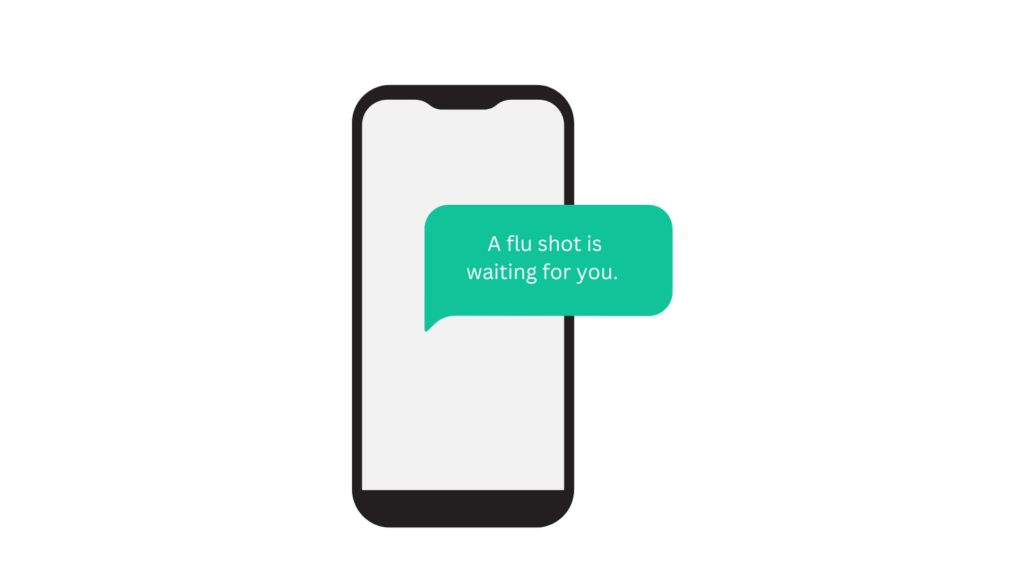How to use multi-level nudges and take ideas to scale: A Q&A with Dr. Shivan Mehta

In this article, you’ll learn:
- How a health system is using nudges on both patients and clinicians to increase flu vaccinations and mammograms
- How a small pilot study to increase colonoscopies was scaled to 20,000 patients and led to a 6% increase in show rates, which translates to nearly 1,800 more colonoscopies done per year
- Advice on how to tackle a health challenge from multiple levels
CHIBE Associate Director Dr. Shivan Mehta describes how Penn Medicine uses behavioral economics tools to help patients make it easier to take care of their health, while also reducing clinician burden.
Hear from Dr. Mehta, associate chief innovation officer at Penn Medicine and director of the Population Health Lab, about the effectiveness of multi-level nudges and how to operationalize these types of programs across institutions in this Q&A below.
Can you give us an example of how you’ve used behavioral insights in a multi-level way with touchpoints on patients, clinicians, and the health system?
We are currently evaluating two trials run across Penn Medicine Primary Care that use multi-level nudges. One was aimed at increasing flu vaccination among patients 50 and older, the other at increasing breast cancer screening rates among women 40 and older overdue for a mammogram. These trials used insights from behavioral economics to target both patients and clinicians, using technology to deliver timely nudges to both.
For flu vaccinations, patients received texts ahead of an upcoming office visit with their primary care provider. These messages, stating that a “flu shot is reserved for you,” incorporated the principle of endowment to frame the flu vaccination as the default action as they prepared for their upcoming visit (this was determined to have the highest response rate based on trials by the Behavior Change for Good Initiative and the Penn Medicine Nudge Unit).

Clinicians also received a default nudge in the form of an automated pended order. When a patient was enrolled in the trial, an order was pended to pre-charting in the upcoming visit, prompting the physician to discuss and sign the order during the visit. Physicians still had the opportunity to cancel the order if the patient declined or if they felt it inappropriate for a given patient. These nudges also serve to reduce effort for ordering on the part of the physician. Finally, physicians at intervention clinics also received messaging designed to influence decision making using social norms and peer behavior in the form of peer comparison emails. These monthly emails compared a given physician’s flu vaccination rate among their panel with that of their peers across primary care.
The mammogram trial was functionally similar with an order for mammography pended to pre-charting in an upcoming visit to nudge the clinician to discuss and sign the order, reducing the effort required and setting the behavior as the default. Patients received texts after the visit where an order was signed, again with endowment framing, indicating that a mammography appointment was “reserved” for them, fostering a sense of availability and ownership, and encouraged scheduling their mammogram appointment immediately. These messages also intended to overcome other decision-making biases by prompting patients to pre-commit to scheduling their mammogram and providing immediate reinforcement of the mammogram recommendation from their office visit.
Both trials seek to increase uptake in the behavior using principals shown to overcome many human decision-making biases, while also reducing burden on both clinicians and patients to do so.
Full trial results are still pending, but Penn Medicine Primary Care is very interested in testing this in additional clinical contexts, and we are in discussions about the next phase of testing and evaluation.
One of your projects was a program for colonoscopy prep involving behaviorally informed texts to patients to get them ready for the procedure. After promising results from a learning pilot (with a 28 percentage point increase in show rates to colonoscopy appointments), the team saw null results in a larger sample. But the next year, the intervention was scaled to 20,000 patients and saw a 6 percentage point increase in show rates. Can you talk about what happened between phase 2 and phase 3?
This is the ColoPrep colonoscopy preparation navigation program. As you described, in 2018 a small pilot project showed promise for improving show rates and bowel prep quality in patients randomly assigned to receive the text messaging compared with those who did not. This pilot was run with a “fake back end” meaning it was a live person, not an automated program, texting instructions to patients and responding to questions in the week leading up to their procedure.
In 2019 we scaled this up to run a randomized clinical trial (RCT). The RCT texting program was different from that of the pilot in that it was entirely unidirectional and automated – there were no opportunities for patients to connect to care or have questions answered as there were in the pilot. At trial end, we found no difference in the show rate or bowel prep quality for those receiving the intervention as compared to controls.
While the results were somewhat discouraging, the program still showed promise in easing staff and clinical team phone call burden, and in focusing their efforts on patients that needed it the most rather than calling every single patient with instructions. In that vein, in 2021, we began rolling the program out to all patients scheduled for a colonoscopy. The updated version of ColoPrep offers fully bidirectional texting to patients, including timely reminders and instructions for preparation based on their procedure date, a fully automated support tree, and connection to care team members if their questions remain unanswered. Messages are sent through the electronic health record to the care team, and the team can respond directly to patients via the same texting platform. This asynchronous communication allows the care team to focus even more on the patients that need their help, and this version is most similar to the initial pilot from 2018.
As of early January 2025, Coloprep 3.0 is now live at all 4 Penn Medicine clinic locations. Prior to this, the program was offered at only 3 of the 4 clinics, providing the opportunity to evaluate the show rate and bowel preparation quality of procedures at sites with the program to those at the 4th site without it, using it as a natural control group. With this evaluation, using a difference in differences approach, we found that even while show rate improved modestly at the control site, Coloprep sites showed a significantly greater increase of nearly 6%. This translates to nearly 1,800 additional completed colonoscopies per year.
This translates to nearly 1,800 additional completed colonscopies per year.
In this case, working closely with the operational and technical (Way to Health) teams was the most important ingredient for scaling the most successful version of the program. Additionally, it highlights the value and importance of iteration and continued evaluation in health care innovation so that we can identify the most effective solutions.
What advice would you give peer investigators on how to tackle a problem from multiple levels?
As we think about how to design, evaluate, and scale new approaches to health care delivery, there are a few principles that have been important for us to bring ideas to scale.
- First, it is critically important to work with clinical practices in a true partnership that involves co-creation, identification of priorities, and iteration of solutions to learn from patients and clinicians. Our clinical partners have deep insights into clinical problems and an understanding of how to implement and scale solutions.
- Second, it is important to know the context of the problem from the end-user perspective as well as what solutions have been tried before and whether they were successful or not.
- Third, it is helpful to identify science-backed approaches from other clinical areas and to think about how to translate that to the proposed solution.
- Finally, it is critical to be pragmatic and flexible in the iteration of the solutions so that they are more likely to be adopted and they can be tailored to different clinical environments and situations.
What health problem are you tackling next?
One area of focus for our group is thinking about how to move from individual clinical interventions to more integrated programs. By working individually on evidence-based cancer screenings and vaccinations we have found that a combination of population-based outreach and nudges around office visits are both effective at boosting uptake, but it is challenging to scale when there are many interventions that may be overlapping and are not coordinated. Additionally, there is the risk of alert and reminder fatigue on the part of patients and clinicians.
Thus, we are thinking about how to integrate each of our interventions into a broader program that focuses on both visits and the time when patients are not seeing clinicians. This will help to prioritize and hopefully simplify things for patients and clinicians so that prevention becomes more automated and clinicians can focus on more complex issues during visits.